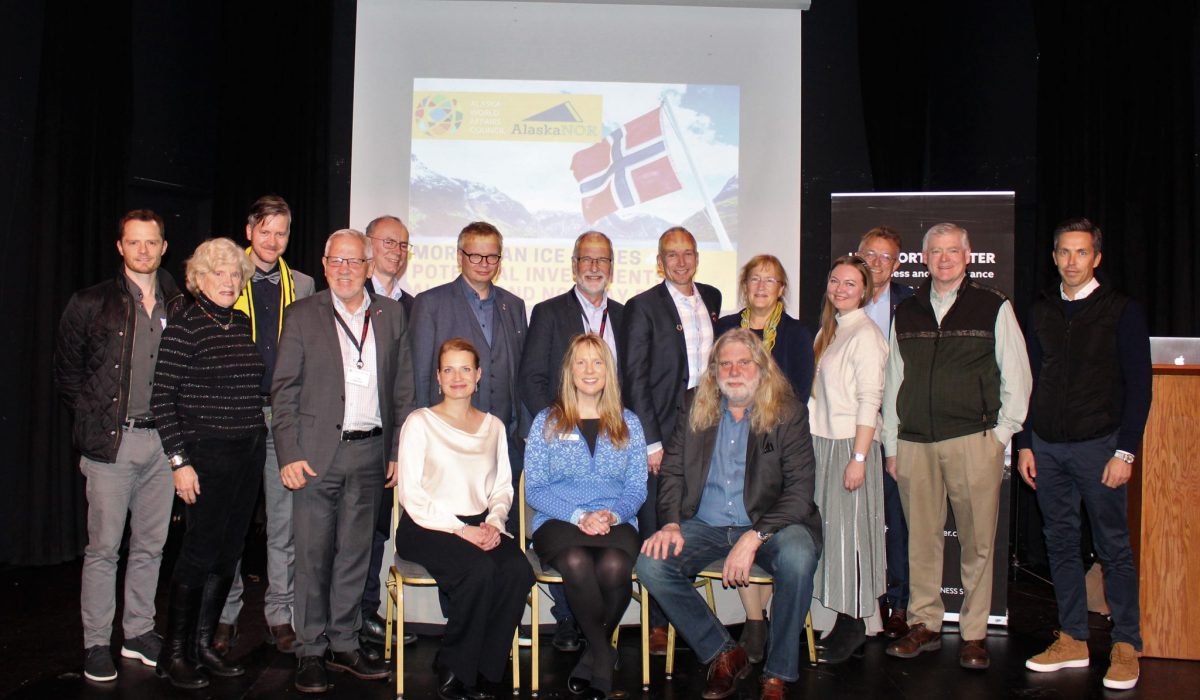
AlaskaNor: Highlighting Blue Economy Potential
As Arctic regions, Alaska and North Norway share similar characteristics, particularly regarding the regions’ economic dependence on maritime industries and their potential for blue economy development. Since 2018, the AEC has served as a partner at the AlaskaNor project. This project aims at addressing knowledge gaps concerning the opportunities for both regions to develop their blue economy.
Blue Economy Potential
“Over the last two decades, the blue economy has become an international catchphrase to highlight the many economic opportunities the world’s oceans provide. A buzzword that embraces the manifold economic opportunities associated with the ocean, while at the same recognizing, accounting and – in some cases – addressing related threats of climate change, overfishing or pollution”, says AlaskaNor project leader Andreas Raspotnik (PhD) from the High North Center for Business and Governance at Nord University in Bodø, Norway.
According to Raspotnik, the world’s oceans are not only vital for human wellbeing as climate-regulator and oxygen producer, they also provide invaluable ecosystem services, contribute to global food security, and offer opportunities for economic growth and development. OECD’s calculations show that the world’s oceans were valued with 1.5 trillion USD in 2010 – about 2.5% of the world’s gross economic value. The economic value of the ocean outputs could be doubled by 2030, reaching over 3 trillion USD and approximately employing 40 million full-time jobs.
Collaboration in “Blue Way”
Ocean economic activities can be distinguished between established and emerging marine industries. In addition to the traditional industries of shipping, capture fisheries, tourism, and marine recreation, there is now large-scale industrial activity associated with exploitation of offshore oil and gas, the harnessing of marine renewable energy, and aquaculture-based food production, as well as emerging new activities, such as ocean mining and marine biotechnology. The blue economy encompasses both ocean-based industries and the natural assets and ecosystem services that the ocean provides (for example fish, shipping lanes, etc.).
“In AlaskaNor project we do not necessarily calculate the economic performances of ocean industries in Alaska and North Norway but – based on existing research – examine the potential of these two Arctic regions and its industry stakeholders to collaborate – to collaborate in a blue way”, Raspotnik states.
According to Andreas Raspotnik, Alaska and North Norway are in some aspects two competitive regions in the global market. They share one major common characteristic: a high dependency on the ocean and its resources.

AlaskaNor project leader Andreas Raspotnik (PhD)
Photo: Trine Jonassen, High North Center for Business and Governance
Fishing Industry
The fishing industry in the Arctic is currently undergoing a process of transformation driven by climate change, the global market’s continuously increasing demand for fish, and the fact that most fisheries elsewhere are depleted and/or being fished at full capacity. According to Raspotnik, the fisheries and aquaculture industries in Alaska and North Norway are among the best managed and most sustainable in the world, counting for a substantial amount of landings and production in the United States and Norway.

Maritime Transportation
“Maritime transportation throughout the Arctic region has undergone sustained, and in some parts, significant growth over the past decade. The continued decline of sea ice, the resulting improved access to natural resources, and new developments in ship technology are the primary drivers of increased shipping activity throughout the Arctic Ocean. In addition, geopolitical interests, improved infrastructure, and evolving regulatory frameworks continue to influence maritime activity in the region”, Raspotnik says.
The preliminary results of the AlaskaNor project show that the maritime transport sector in Alaska and Northern Norway display a number of noticeable similarities, including the dominance of bulk cargo as well as the importance of fishing and cruise tourism. Overall cargo volume in the two regions bears a striking resemblance.

Oil and Gas
“Generally speaking, Alaska and Norway are both mature oil provinces and have been major players in the world oil market. Both have significant experience in leasing, approving leases, and permitting exploration and development. With increasing global momentum in transitioning to cleaner fuels, the natural gas sector has considerable market potential. Getting that gas to markets, however, is more difficult”, Raspotnik says.
Way Forward?
The sectoral summaries of the AlaskaNor project are now made public. If the global situation permits, these results will be presented in a series of outreach events later in 2020. Dr. Raspotnik highlights, however, that the AlaskaNor is only the beginning. “We need more intra-Arctic cooperation, and not just from a research perspective but essentially also from a business perspective. Yet, some essential questions remain: How can we enhance business cooperation if some of the industries are actually competitors on the global market? How can we ‘scale-up’ and increase investments in the North and for the North? And, how will the COVID-19 pandemic impact business development and cooperation in the North?”, Raspotnik concludes.
For more information about the AlaskaNor project, please visit https://alaskanor.com/home
Key recommendations and report summaries are available at https://alaskanor.com/reports
Dr. Raspotnik also serves as an invited expert in the AEC’s Blue Economy Working Group.